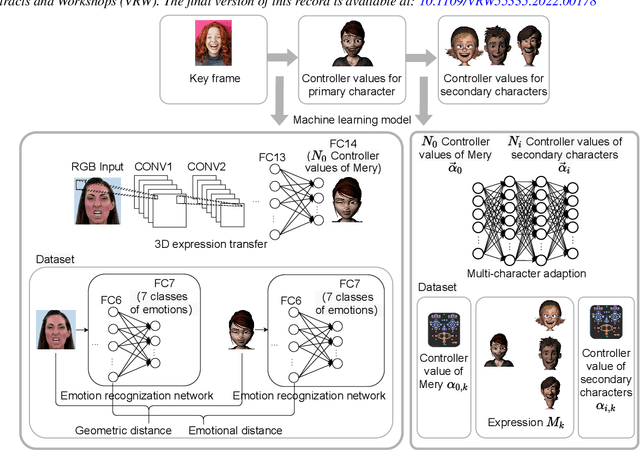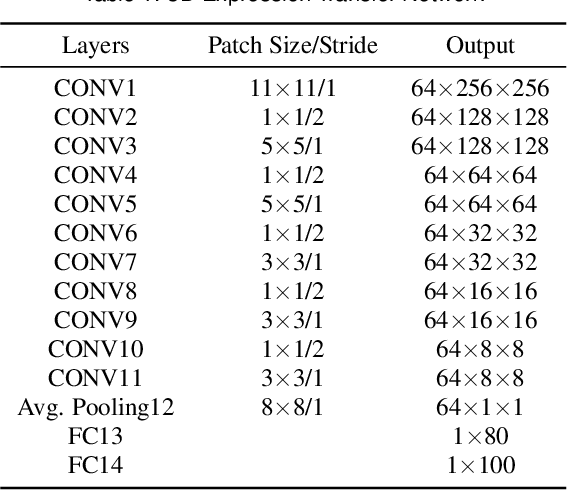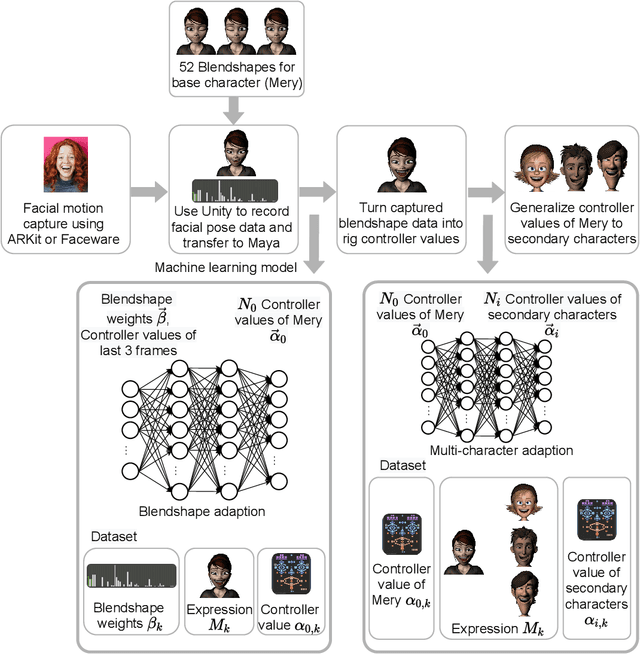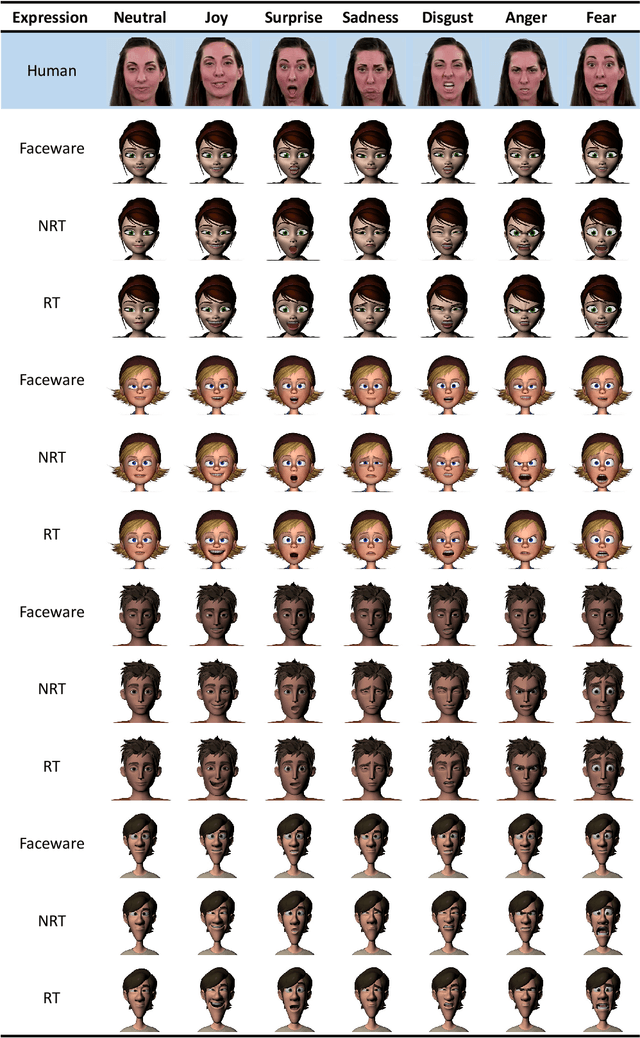Jingying Wang
MienCap: Realtime Performance-Based Facial Animation with Live Mood Dynamics
Aug 06, 2025



Abstract:Our purpose is to improve performance-based animation which can drive believable 3D stylized characters that are truly perceptual. By combining traditional blendshape animation techniques with multiple machine learning models, we present both non-real time and real time solutions which drive character expressions in a geometrically consistent and perceptually valid way. For the non-real time system, we propose a 3D emotion transfer network makes use of a 2D human image to generate a stylized 3D rig parameters. For the real time system, we propose a blendshape adaption network which generates the character rig parameter motions with geometric consistency and temporally stability. We demonstrate the effectiveness of our system by comparing to a commercial product Faceware. Results reveal that ratings of the recognition, intensity, and attractiveness of expressions depicted for animated characters via our systems are statistically higher than Faceware. Our results may be implemented into the animation pipeline, and provide animators with a system for creating the expressions they wish to use more quickly and accurately.
Surgment: Segmentation-enabled Semantic Search and Creation of Visual Question and Feedback to Support Video-Based Surgery Learning
Feb 27, 2024



Abstract:Videos are prominent learning materials to prepare surgical trainees before they enter the operating room (OR). In this work, we explore techniques to enrich the video-based surgery learning experience. We propose Surgment, a system that helps expert surgeons create exercises with feedback based on surgery recordings. Surgment is powered by a few-shot-learning-based pipeline (SegGPT+SAM) to segment surgery scenes, achieving an accuracy of 92\%. The segmentation pipeline enables functionalities to create visual questions and feedback desired by surgeons from a formative study. Surgment enables surgeons to 1) retrieve frames of interest through sketches, and 2) design exercises that target specific anatomical components and offer visual feedback. In an evaluation study with 11 surgeons, participants applauded the search-by-sketch approach for identifying frames of interest and found the resulting image-based questions and feedback to be of high educational value.
 Add to Chrome
Add to Chrome Add to Firefox
Add to Firefox Add to Edge
Add to Edge